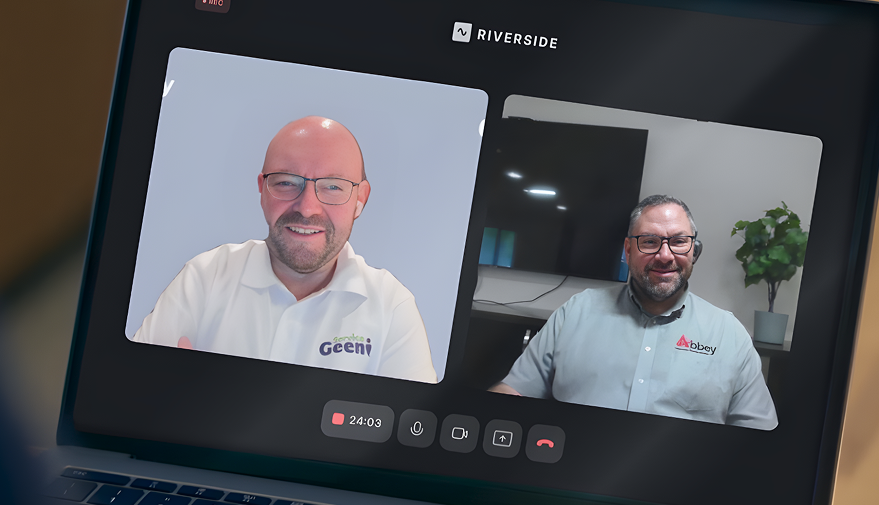How a CMMS Improves Preventive Maintenance and Reduces Downtime

What is Preventive Maintenance in a CMMS (and why does it matter now)?
Let’s start with the basics.
A CMMS designed for preventive maintenance helps you plan, schedule, and track work so you can fix issues before they become breakdowns. It centralises everything - assets, service history, work orders, engineers, and parts - all in one place instead of scattered across spreadsheets, whiteboards, and guesswork.
A modern CMMS should help you:
- Automate preventive maintenance schedules based on time, usage, or condition.
- Standardise checklists and processes so every job is done consistently.
- Track every asset and work order in one place.
- Give engineers mobile access to the jobs and information they need.
- Turn data into insights so you can spot patterns and reduce failures over time.
In other words: a CMMS helps you move from “we fix it when it breaks” to “we stop it breaking in the first place”.
From Reactive to Proactive: How a CMMS Transforms Preventive Maintenance
Most maintenance teams don’t set out to be reactive. It just happens over time.
Assets grow. Contracts become more complex. Data lives in different systems. Paperwork piles up. Before you know it, you’re living in “emergency mode” - responding to whatever screams loudest.
A well-implemented CMMS changes that in a few key ways:
1. Automated scheduling you can trust
Instead of relying on diaries, spreadsheets, or someone’s memory, your CMMS:
- Creates planned maintenance schedules for each asset
- Triggers jobs by time (e.g. every 3 months), usage (e.g. every 500 hours), or meter readings
- Assigns work to the right engineer with the right skills
- Flags overdue jobs so nothing quietly disappears
This keeps your plan on track, even when things get busy.
2. Standardised preventive maintenance procedures
With standard checklists and workflows, you can:
- Make sure every engineer follows the same steps.
- Capture required readings, photos, and signatures.
- Reduce variation in how maintenance is done.
- Improve quality and compliance across the board.
Instead of “it depends who turned up”, you get consistent, repeatable service.
3. Centralised asset histories
A good CMMS puts assets at the heart of your data, with full history in one place - faults, repairs, inspections, and parts used.
That makes it far easier to:
- See recurring issues and root causes
- Understand true lifecycle cost
- Decide when to repair vs replace
- Prove compliance during audits
You’re not chasing old job sheets or asking “who worked on this last time?” - it’s all there.
4. Mobile working for engineers
Paper job sheets get lost. Photos sit on personal phones. Details get missed.
With a mobile-ready CMMS, engineers can:
- See their jobs for the day, with all asset details
- Log work done, readings, and parts used on the spot
- Attach photos and notes for future reference
- Record job completion instantly
That means better data, fewer delays, and less admin back at the office.
7 Ways Preventive Maintenance Reduces Downtime
So how does all this actually translate into less downtime? Let’s break it down.
1. Fewer unexpected breakdowns
This is the obvious one - but it’s worth stating.
When your preventive maintenance is:
- Scheduled properly
- Completed on time
- Carried out against clear standards
…you’re far less likely to be surprised by catastrophic failures.
Lubrication happens when it should. Wear is spotted early. Safety checks are completed. You’re not relying on “we’ll get around to it”.
2. Faster response when something does fail
Even with the best preventive programme, things still go wrong sometimes.
A CMMS helps you react faster by:
- Giving teams a simple way to log faults (with photos and notes)
- Automatically turning those into prioritised work orders
- Routing jobs straight to the right engineer
- Providing instant asset history so faults can be diagnosed quickly
The result? Shorter Mean Time to Repair (MTTR), less disruption, and smoother operations across your site(s).
3. Better spare parts availability
One of the most common causes of extended downtime is simple: the right part isn’t available.
When inventory is linked to your CMMS:
- Planned jobs automatically reserve the parts they need
- Low-stock alerts help you avoid stock-outs
- You can see which parts are used most often
- You reduce both over-stocking and urgent, last-minute orders
Good stock & parts management means fewer machines sitting idle while everyone waits for a delivery.
4. Longer asset life and fewer nasty surprises
By carrying out regular, data-driven preventive maintenance, you:
- Reduce stress on critical components
- Avoid running equipment to the point of failure
- Extend asset useful life
- Plan replacements instead of reacting to sudden failures
For leadership, that means fewer shocks to the budget and more predictable capital planning.
5. More productive engineers
Engineers are at their best when they’re fixing and improving - not chasing information.
A CMMS helps them stay productive by:
- Providing a clear, prioritised schedule
- Giving instant access to manuals, previous work, and checklists
- Reducing paperwork and duplicate data entry
- Cutting down on wasted trips due to missing parts or access issues
When engineers aren’t fighting the system, they can focus on doing the work that actually keeps assets running.
6. Stronger compliance and safety
Unplanned downtime isn’t just about performance. It can also stem from failed audits, missed inspections, or safety incidents.
A CMMS helps you:
- Prove that required checks were carried out
- Keep up with statutory inspections and certifications
- Maintain full audit trails of work done, by whom, and when
- Reduce risk of incidents that lead to shutdowns
You’re not scrambling for paperwork - you’ve got digital proof ready to go.
7. Clear visibility through dashboards and KPIs
Finally, a CMMS gives you data you can actually use.
By tracking metrics like:
- Preventive maintenance compliance
- Mean Time Between Failures (MTBF)
- Mean Time to Repair (MTTR)
- Planned vs reactive work ratio
…you can see exactly where downtime risk is creeping in and take action early.
Instead of gut feel, you have facts.
How Service Geeni Supports Preventive Maintenance
Service Geeni is more than a simple CMMS. It’s a specialist service management platform that bridges the gap between overly complex enterprise systems and lightweight tools.
Here’s how it supports effective preventive maintenance and reduced downtime:
Assets at the core
Service Geeni keeps your assets at the heart of your service data:
- Full history of jobs, inspections, and faults
- Linked contracts, SLAs, and site details
- Clear visibility across multi-site operations
This asset-centric approach makes it easier to plan preventive work and understand performance over time.
Unified workflows, data, and teams
Rather than juggling separate tools for jobs, scheduling, and reporting, Service Geeni:
- Centralises workflows, automation, and controls
- Connects staff, engineers, and equipment on one platform
- Provides a single source of truth for service operations
That means less chaos, fewer hand-offs, and smoother communication.
Smart automation without the complexity
You can:
- Schedule preventive maintenance automatically
- Route jobs to the right engineer
- Trigger follow-up work from inspections
- Use real-time insights to adjust plans
All while keeping the system simple enough for teams to actually use day-to-day.
Built for specialist, asset-heavy industries
Service Geeni is designed for industries with complex needs - like materials handling - where generic platforms often struggle to cope with asset hierarchies, service requirements, and operational expectations.
So you get the depth you need, without drowning in features you’ll never touch.
Real-World Results: How Clarks US Strengthened Preventive Maintenance with Service Geeni
- 1200+ jobs raised a month
- 83% Reduced response time
- 131% Increase on-time jobs
Clarks US, supported by a team of 18 residential engineers, replaced a mix of spreadsheets and an outdated CMMS with Service Geeni - and the impact on preventive maintenance was immediate.
Automated scheduling kept planned work on track, issue reporting became clearer and more consistent, and engineers gained the visibility they needed to spot recurring faults before they escalated.
With improved parts management and data-driven monitoring of KPIs, Clarks US reduced downtime, minimised stockouts, and strengthened the reliability of their warehouse machinery - all contributing to major improvements in maintenance performance, including an 83% faster response time and a 131% increase in on-time jobs.
Read the full Clarks case study
Practical Steps to Improve Preventive Maintenance with a CMMS
If you’re ready to move from “patching things up” to proactive, data-driven maintenance, here’s a simple roadmap:
1. Map your current reality
Capture how maintenance really works today:
- How jobs are raised
- How preventive tasks are planned
- Where data lives
- Where delays and frustrations appear
2. Define your goals
Be specific. For example:
- Reduce unplanned downtime by 20%
- Increase PM completion rate to 90%
- Cut emergency call-outs by half
These goals will guide configuration and reporting.
3. Clean and structure your asset data
Get your asset register in good shape:
- Standard naming
- Key details (location, criticality, manufacturer, etc.)
- Link assets to sites
4. Design your preventive maintenance plans
Start with your most critical assets and build:
- Time-based schedules
- Usage-based triggers where data is available
- Clear checklists for each task
5. Invest in training and support
Make it easy for engineers and planners to get on board:
- Role-based training
- On-the-job support
- Champions in each team or site
6. Measure, review, and improve
Use your CMMS data to review:
- Downtime trends
- PM completion rates
- Reactive vs planned work
Then tweak schedules, processes, and resourcing accordingly.
Ready to put downtime in its place?
With the right CMMS and a strong preventive maintenance approach, you can:
- Reduce unplanned downtime
- Extend asset life
- Keep engineers productive
- And regain control over your service operations
Service Geeni helps you manage your assets, data, and engineers in one simple platform, designed to optimise your operations and support your growth.
If you’re ready to move from service chaos to total control, let’s talk.
Book a demo or get in touch with our team to see how Service Geeni can power your preventive maintenance and keep your downtime firmly under control.
You may also be interested in:
Download Full PDF
Read More…

Book Your Demo Today







